Xylophanes epaphus
|
|
Updated as per More, Kitching and Cocucci's Hawkmoths of Argentina 2005, October, 2007
Updated as per Kati image (Camp Caiman, French Guiana, July 2010); July 26, 2010
Updated as per Andres Urbas (Camp Caiman, near Kaw, French Guiana, April 1, 8, 2011); May 6, 2011
Updated as per CATE Sphingidae (Ecuador, Suriname, northern Brazil); May 6, 2011
Updated as per French Guiana Systematics: Sphingidae; May 18, 2011
Updated as per personal communication with Vadim Kroutov (Xylophanes epaphus female in Atalaya, Ucayali, Peru); February 26, 2016
|
Xylophanes epaphus
(Boisduval, [1875])
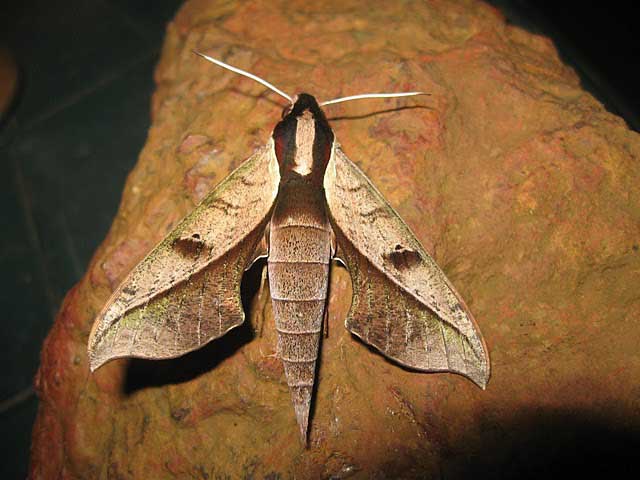
Xylophanes epaphus, near Kaw, French Guiana,
April 8, 2011, courtesy of Andres Urbas.
This site has been created by
Bill Oehlke at oehlkew@islandtelecom.com
Comments, suggestions and/or additional information are welcomed by Bill.
TAXONOMY:
Family: Sphingidae, Latreille, 1802
Subfamily: Macroglossinae, Harris, 1839
Tribe: Macroglossini, Harris, 1839
Genus: Xylophanes Hubner [1819] ...........
Species: epaphus Boisduval, [1875]
|
MIDI MUSIC
.....It's a Wonderful World.....
copyright C. Odenkirk
ON.OFF
<bgsound src="world.mid" LOOP=FOREVER>
|
DISTRIBUTION:
Xylophanes epaphus (approximate wingspan: males: 80mm; females: 80-84mm) flies in
French Guiana (specimen type locality): Camp Caiman (Kati);
Suriname;
Ecuador;
Peru: Ucayali: Atalaya;
northern Brazil;
and possibly ??
as far south as
Argentina ??. Ezequiel Osvaldo Núñez Bustos indicates this species does not fly in Argentina.
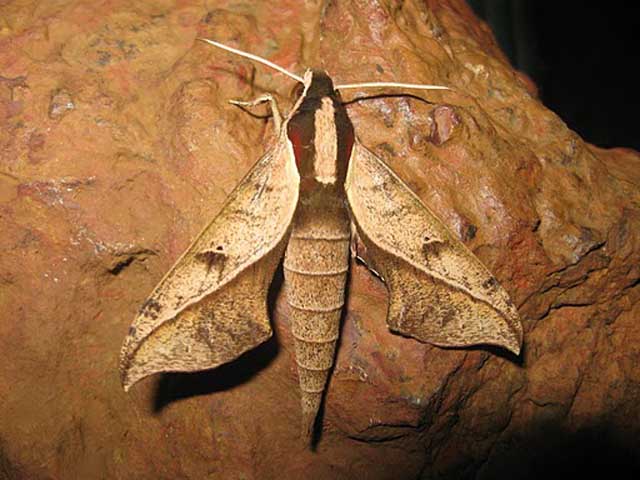
Xylophanes epaphus, near Kaw, French Guiana,
April 1, 2011, courtesy of Andres Urbas.
Xylophanes epaphus is similar to Xylophanes obscurus, but epaphus is generally paler, with a pinkish overall tint.
The forewings are shorter and broader than those of obscurus, and they are less hollowed out below the apex.
The dark patch outside the discal spot is smaller, transverse, narrowly oval, and less than half the width of that of obscurus.
The conspicuous postmedian line is slightly concave and apical as in Xylophanes cosmius.
There are frequently greenish tints along the costa and in the postmedian area.
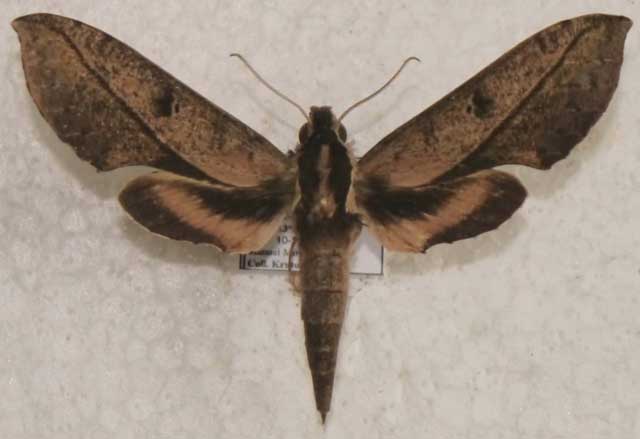
Xylophanes epaphus female, Atalaya, Ucayali, Peru,
80mm, courtesy of Vadim Kroutov.
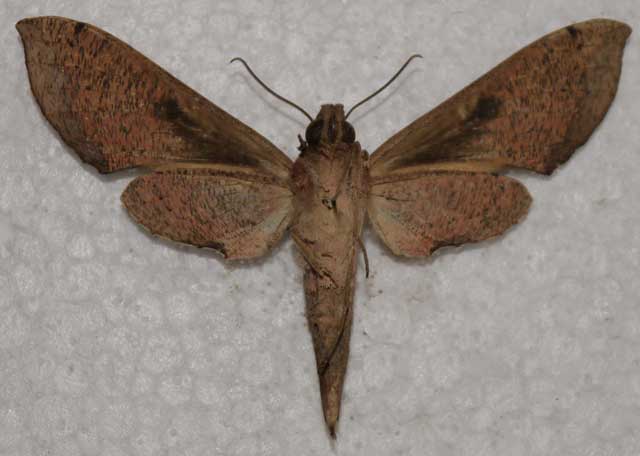
Xylophanes epaphus female (verso), Atalaya, Ucayali, Peru,
80mm, courtesy of Vadim Kroutov.
FLIGHT TIMES:
Xylophanes epaphus adults probably
brood continuously. Kati reports a July flight in French Guiana.
Andres Urbas reports April 1 and 8, 2011, flights near Kaw, French Guiana. They have also been taken in French Guiana in February.
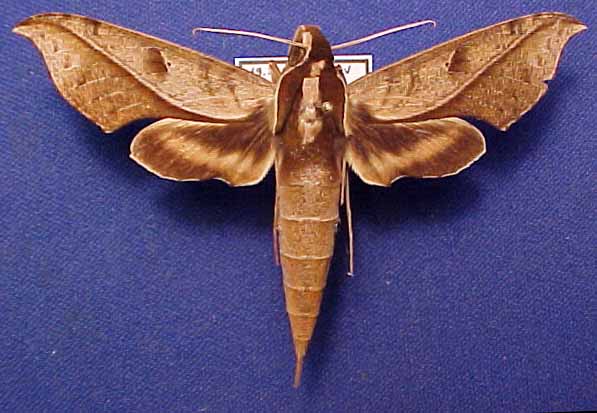
Xylophanes epaphus courtesy of John Vriesi.
ECLOSION:
Pupae probably wiggle to surface from
subterranean chambers just prior to eclosion.
SCENTING AND MATING:Females call in the males with a
pheromone released from a gland at the tip of the
abdomen.
Males come in to lights very readily, but females are seldom taken in
that way.
EGGS, LARVAE, PUPAE:
Larvae probably feed on
Psychotria panamensis and Psychotria nervosa
of the Rubiaceae family and on
Pavonia guanacastensis of the Malvaceae family.
Moths emerge approximately one-two months after larvae pupate.
Use your browser "Back" button to return to the previous page.
Goto Main Sphingidae Index
Goto Macroglossini Tribe
Goto Central American Indices
Goto Carribean Islands
Goto South American Indices
Goto U.S.A. tables




